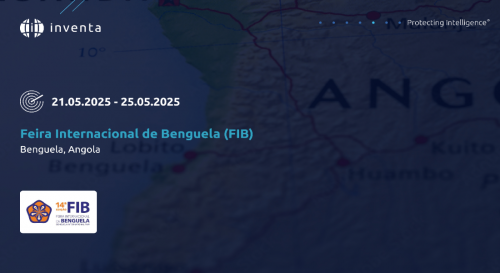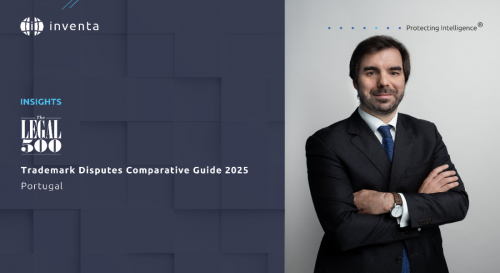
The evolution of Software Patents in Europe
Computer programs appear on Article 52(2)(c) of the European Patent Convention (EPC), of 1973 as a subject matter excluded from the meaning of invention. However, in 2005, the European Patent Organization (EPO) had already granted over thirty thousand patents related to computer programs and, currently, computer-implemented inventions are the object of approximately 35% of European patent applications.
The justification lies on the rule contained on no. 3 of the mentioned article, that foresees that computer programs, as well as all the matters predicted in the same no. 2, will not be excluded of patentability unless «a European patent application or European patent relates to such subject-matter or activities as such».
The determination of the limits of patentability regarding computer-implemented inventions in Europe derives, essentially, from the decisions of the Technical Boards of Appeal (TBA) of EPO and the interpretation fixed on them, of the relevant provisions.
Although TBA’s decisions are not binding besides the instance in which they’re issued, they are taken as a guide by the examiners and other TBA.
Complementarily, when a specific interpretation becomes stable in TBA’s jurisprudence, the same is transposed to the Guidelines for Examination of EPO, becoming enforced in practice. Equally or more importantly, apart from the national intellectual property institutes, courts from the European countries, when confronted with already examined cases by the TBA in the light of EPC, also try to interpret and apply the law in accordance with the same values. Given this importance, this text makes a reference to some important decisions of the TBA in this matter.
a) The interpretation of the Technical Boards of Appeal from the VICOM case to the IBM cases dated 1998 and 1999
Although EPC dates from 1973, EPO only started to receive European patent applications in 1977. Approximately ten years later, a decision from a TBA would arise, which would constitute the foundation of the evolution of EPO’s jurisprudence regarding inventions implemented by computer. That decision was taken in case T 208/84 VICOM – computer related Invention, of July 15 of 1986, which we will start this analysis with.
Since this decision, for over more than two decades, until the case T 1173/97 IBM – Computer program product, from July 1st of 1998, prevailed an agreement in the TBA’s jurisprudence, as we shall see below, usually designated by «technical contribution approach». Accordingly, this point will address three decisions issued on this stage.
- T 208/84 VICOM – Computer related invention, dated July 15th of 1986. In this decision the European patent application no. 79300903.6 (EP0005954) with the title «Method and device for improved processing of digital image» and application date of May 22nd of 1979 was analyzed. The invention object of this patent application, that claimed priority of a prior US patent, comprised a method and a device for the digital processing of images in which the dots of an image were represented in two sequences of two-dimensional images that carried a mathematical method and that, particularly, made the mentioned processing faster. In this case, TBA decided that, even if the underlying idea to an invention consists in a mathematical method, if that method is used in a technical process and a claim is aimed to that same process in which the method is used, it cannot be considered that the invention consists in a mathematical method as such and that what matters to the state of the art, is the technical contribution of the invention as defined in the claims considered as a whole.
- T 26/86 KOCH & STERZEL – X-ray device, of 21st May of 1987. One of the first decisions from the TBA, subsequent to VICOM’s decision, related to the present matter and that concluded the application procedure of European patent application no. 78101198.6 (EP0001640), «X-ray Device», filed on October 23rd of 1978 – the decision T 26/86 KOCH & STERZEL – X-ray Device, of May 21st of 1987. The invention in question consisted of an X-ray device which operation was controlled by a computer program that allowed, avoiding overload, to reach maximum performance of that same device. From this case, what matters the most is to retain that TBA determined that the objects that consist in a combination of technical and non-technical characteristics are patentable.
- T 769/92 SOHEI – universal management system, of 31st May of 1994. The object of the invention of this decision consisted in a computer system for pluralistic types of independent management, including, at least, financial management and inventory. Pointing out from this TBA’s decision: an invention that holds functional characteristics implemented by software is not excluded of protection, if, to solve the problem solved by the invention, technical considerations are necessary. These technical considerations grant technical nature to the invention, as far as they imply a technical problem to be solved by the implicit technical characteristics.
As mentioned, it is usually considered that these (among others) first decisions from TBA constitute the designated phase of «technical contribution approach». This denomination is due to the reference in some of the decisions above presented that the article 52 of EPC only allowed patentability of inventions that had a technical contribution in an area not excluded from patentability. That is to say, in this phase, in the exclusion analysis via art. 52(2), the requirements of patentability of the novelty and inventive step would be considered, so the contribution was assessed.
b) The IBM cases from 1998 and 1999
The end of the «technical contribution approach» was set on the case T 1173/97 IBM – Computer program product, from 1998, giving way to the «whole contents approach», that can be presented as the non-exclusion by force of the article 52(2) of EPC, of claims that consist in a combination of excluded and not excluded elements, and in which the relevance of the excluded and not excluded elements is subsequently treated in the analysis of the novelty and inventive activity requirements.
- T 1173/97 IBM – Computer program product, from 1st July of 1998. The invention object of the European patent application no. 91107112.4 (EP0457112), from May 2nd of 1991, consisted in the asynchronous resynchronization of an authorization procedure. This request contained independent activity and entity claims. The first claim concerned a method, claim 14 defined a computer system and claims 20 and 21 defined the entity subjected to the intended protection as «computer program product». TBA starts to state that a computer program doesn’t have technical character only by being a computer program, wherefore physical modifications of the hardware derived from the execution of instructions given by computer programs cannot, by itself, constitute the required technical character, since such modifications are common to every computer programs, wherefore would not be susceptible of distinguish a computer program with technical character of a computer program as such. TBA defines, then, that if that common technical effect cannot reveal, it is necessary to identify an additional technical effect, resultant from the execution of a program’s instructions. If this additional technical effect has a technical character or solves a technical problem, the invention could be patentable. Therefore, a patent could be granted, not only in a case of an invention in which a computer program generates, through another computer, an industrial process or the functioning of an industrial machine, but also in cases where a computer program is the only way or a necessary way to obtain a technical effect, for example, in the internal functioning of a computer. That’s when the additional technical effect was created.
Finally, TBA mentioned the inevitable question of claim admissibility aimed to computer program products. Regarding this question, TBA considered that, as far as a computer program - when executed on a computer - produces a technical effect, there will be no justification to distinguish a direct technical effect from an indirect technical effect, in other words, the possibility to produce a technical effect. Therefore, a computer program would have technical character for having the possibility of causing a predetermined additional technical effect. In these terms, a computer program product that implicitly comprises every characteristic of a patentable method won’t be, presumably, excluded.
- T 935/97 IBM – Computer Program II, from 4th February of 1999.
The invention object of the European patent application no. 96305851.6 (EP0767419), from 9th August of 1996, consisted of a method and system for the exhibition of information previously hidden in a windowing environment of data processing system. In these case, besides repeating the held considerations by TBA in the previous decision, it was fixed that the determination of the technical contribution that an invention confers to the state of the art would be a matter of analyzing the novelty and inventive activity requests, not revealing in the analysis of exclusion provided in art. 52 of EPC.
Clearly resulting from these cases is the abandonment of the technical contribution approach and the adoption of «whole contents approach». Therefore, from these decisions, in the identification exercise of an invention under the provisions of article 52nd of EPC, it would be enough to identify the technical characteristics of the claimed matter, not being necessary to verify new and inventive characteristics, since this task should be reserved for the patentability requirements analysis, to be held in a subsequent phase.
Additionally, from the above presented IBM cases resulted that the claims aimed to computer program products should be allowed as long as, when executed on a computer, produce a technical effect. However, the technical effect regarding computer programs must be an additional technical effect, besides the physical interactions’ effect that usually occur between the program and the computer.
c) The interpretation of the Boards of Appeal after IBM cases from 1998 and 1999
If in the previous cases the «technical contribution approach» has been abandoned, the newly adopted «whole contents approach» would be developed in the subsequent cases, expanding itself, and gaining a new designation as «any means approach». If the matter of patentability of inventions implemented by computer now centered itself mainly in the analysis of the inventive activity requirement, the following cases dwell, essentially, on the application of this requirement.
- T 641/00 COMVIK – Two entities, from 26th December of 2002. The analyzed invention in this case, was related to digital systems of portable telephones, in particular, the use of a multi-identity integrated circuit of a single user as an identification module of a subscriber of a mobile unit of a GSM type system. From this decision, it should be retained that the inventive activity of an invention that consists in the mixture of technical and non-technical characteristics should be analyzed having in consideration the characteristics that contribute to the technical character of the invention, disregarding the characteristics that don’t grant such contribute. TBA clarified that the technical problem to be solved shouldn’t be formulated containing solution indications or partially anticipating it. However, characteristics that consist of a claim, and therefore the solution, do not stop, automatically, from appearing in the formulation of the problem. If a claim refers to a goal to be reached in a non-technical area, this goal may appear in the formulation of the problem as part of the framework of the technical problem to be solved.
- T 154/04 DUNS LICENSING ASSOCIATES – Estimate sales activity, from 15th November of 2006. The invention object of the European patent application no. 94912949.8 (EP0695445) from 5th April of 1994, refused by the Examination Division, concerned a system and an adequate method to estimate sales or the products distribution from a sales point without report to central unit, in the basis of sales’ samples of sales point with report to central unit, with a higher precision than the ones obtained by systems and previous methods. In this case, TBA, after reaffirming and develop the adopted criteria by TBA in the COMVIK decision, established that the steps to collate and evaluate data as part of a research method for businesses do not grant a technical character to the method, if such steps do not contribute to the solution of a technical problem, in which sense they could not reveal in the analysis of the inventive activity.
The analysis of the inventive activity is the heart of the patentability of computer-implemented inventions. This is so, because the identification of an invention doesn’t offer big obstacles, as far as it’s enough to identify the technical elements. The analysis of the inventive activity, in accordance form what resulted from the case COMVIK, shall be measured having in consideration only the technical characteristics of an invention, in other words, the ones that contribute for the technical character of the invention (do not confuse with the contribute for the technique status), being possible for the non-technical characteristics to appear in the formulation of the technical problem as part of the framework of the technical problem to be solved.
This evolution hereby presented culminated in the decision of the Enlarged Board of Appeal G/08 – Computer programs, of May 12th of 2010, that little added to these decisions, reaffirming them.
Currency Info
Final charges will be made in USD.
Currency conversion is for information purposes only and accuracy is not guaranteed. Overseas customers are encouraged to contact their bank or credit card provider for details on any additional fees these institutions may include for currency conversion.
- USD 312.389 NGN
Territory List
There are no results for your search.
- Africa
- Algeria
- Angola
- Benin
- Botswana
- Burkina Faso
- Burundi
- Cameroon
- Cape Verde
- Central African Republic
- Chad
- Comoros
- Congo (Republic)
- Côte d'Ivoire
- Democratic Republic of the Congo
- Djibouti
- Egypt
- Equatorial Guinea
- Eritrea
- Eswatini (Swaziland)
- Ethiopia
- Gabon
- Gambia
- Ghana
- Guinea
- Guinea-Bissau
- Kenya
- Lesotho
- Liberia
- Libya
- Madagascar
- Malawi
- Mali
- Mauritania
- Mauritius
- Mayotte
- Morocco
- Mozambique
- Namibia
- Niger
- Nigeria
- Réunion
- Rwanda
- Sao Tome and Principe
- Senegal
- Seychelles
- Sierra Leone
- Somalia
- South Africa
- South Sudan
- Sudan
- Tanzania (mainland)
- Togo
- Tunisia
- Uganda
- Western Sahara
- Zambia
- Zanzibar
- Zimbabwe
- Africa (OAPI)
- Africa (ARIPO)
- Other
- East Timor
- Macao
- Maldives
- Portugal
- European Patent (EPO)
- European Union Trademark (EUTM)
- International Trademark (Madrid System)
- Patent Cooperation Treaty (PCT)




